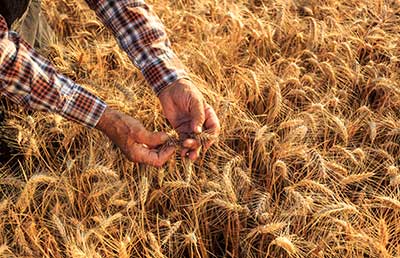How Much Would a Typical Farmer Receive from CFAP#2

Someone asked me how much a typical farmer should receive from CFAP#2. Now it is tough to say what a typical farmer is, but I will show various scenarios that I hope will cover many of the farmers that read this blog.
Remember that corn farmers get 23.2 cents per APH bushel (40% corn marketing average times 58 cents) and soybean farmers get 39.42 cents per APH bushel (54% soybean marketing average times 58 cents).
Instead of simply indicating these numbers in cents per bushel of payment, USDA elected to show the amount of each crop that was marketed during the payment period of April 1 to August 31, 2020. They wanted to be more transparent but they could have simply added a column showing final cents per bushel to provide even more clarity but elected not to.
Scenario #1
Corn and soybean farmer with 3,500 acres with 50/50 crop rotation and 200 APH on corn and 60 on beans.
Corn pays $81,200 and beans pays $32,886 for a total of $114,086.
Scenario #2
Same as #1 but 8,500 acres
Corn pays $197,200 and beans pays 79,866 for a total of $277,066 (could be limited to $250,000).
Scenario #3
Wheat farmer with 5,000 acres and APH of 60
Wheat pays 54 cents multiplied by 73% marketing equal 39.42 cents per bushel for a total of $118,260.
We also know that if this wheat farmer elected PLC on their 2019/2020 crop that PLC will pay about 70 cents per bushel (92 cents multiplied by 85% base acres multiply by 90% PLC yield). Therefore, in the next month or so, a typical wheat farmer will receive an extra $1.1 from USDA in the form of CFAP#2 and PLC.
Scenario #4
Barley farmer with 4,000 acres and APH of 90
Barley pays 54 cents multiplied by 63% marketing equals 34.02 cents per bushel for a total of $122,472
Scenario #5
Sorghum farmer with 2,500 acres and APH of 150
Sorghum pays 56 cents per bushel multiplied by 55% marketing equals 30.8 cents per bushel for a total of $115,500.
Scenario #6
Cotton farmer with 6,000 acres and APH of 800 pounds per acre
Cotton pays 8 cents per pound multiplied by 46% marketing equals 3.68 cents per pound for a total of $176,640.
Scenario #7
Cattle rancher with 3,000 head on hand.
Cattle pays $55 per head for a total of $165,000 (excludes breeding stock)
Scenario #8
Hog farmer with 10,000 head on hand
Hogs pay $23 per head for a total of $230,000.
As you can see, the typical farmer will receive a healthy sum from CFAP#2. In marketing terms, the average increase in price per bushel for each crop (assuming that 2020 APH is close to 2020 harvest yield) will be as follows:
- Corn – 23.2 cents
- Beans – 31.32 cents
- Wheat – 39.42 cents
- Barley – 34.02 cents
- Sorghum – 30.08 cents
Past programs may have made a payment based on PLC payment yield which is based on 90% of an average yield over certain number of years. Using APH will likely yield to a higher payment rate for most farmers.
However, farmers who had a large amount of prevent planted acres will see no benefit from CFAP#2 for those acres. This may lead to pressure on USDA to provide some type of payment for those acres similar to MFP. MFP finally allowed $15 per acre payment for those acres assuming an appropriate cover crop was planted. Will CFAP#2 have the same provisions. We will wait and see. Adding this for up to 10 million acres is only $150 million which on a $14 billion program is not a huge sum.
We shall see and will keep you posted.
Paul Neiffer is a certified public accountant and business advisor specializing in income taxation, accounting services, and succession planning for farmers and agribusiness processors. Paul is a principal with CliftonLarsonAllen in Walla Walla, Washington, as well as a regular speaker at national conferences and contributor at agweb.com. Raised on a farm in central Washington, he has been immersed in the ag industry his entire life, including the last 30 years professionally. Paul and his wife purchase an 180 acre ranch in 2016 and enjoy keeping it full of animals.

Are they using actual or trend adjusted yields for corn and soybeans?